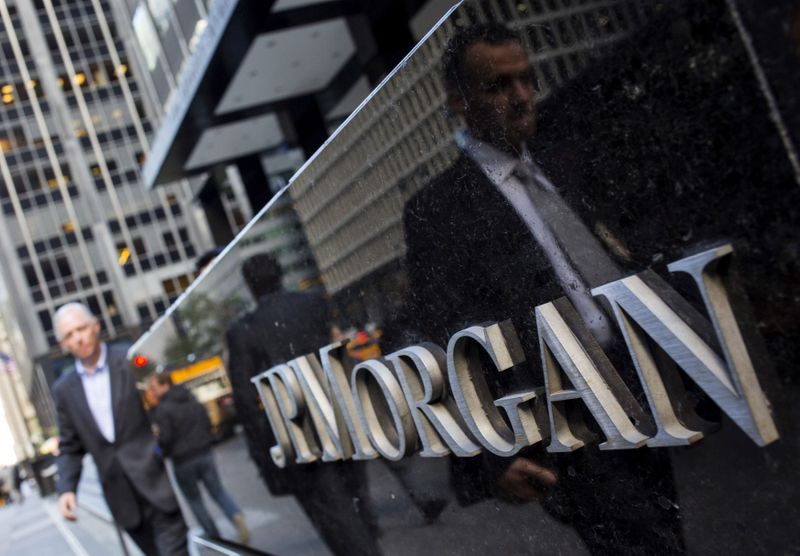By Elizabeth Dilts Marshall, Imani Moise and Anirban Sen
NEW YORK (Reuters) - The main things investors wanted to learn from first-quarter results by JPMorgan Chase & Co (N:JPM) and Wells Fargo & Co (N:WFC) on Tuesday was just how bad the coronavirus recession is going to get and how long it will take to get back to normal.
It looks decidedly unpretty.
Both banks reported major profit declines, primarily due to reserves for future loan losses, and executives said the worst is yet to come.
"In my mind, there's more downside than there is upside at this point," said Wells Fargo Chief Executive Officer Charles Scharf.
Shares of Wells Fargo were down 4.3% in afternoon trading, while JPMorgan's were down 3.4%, even as the broader market rallied on hopes that local, state or federal officials might start to open the U.S. economy more as conditions improve.
The novel coronavirus has so far infected 1.9 million people around the world, including 582,114 in the United States. It continues to keep businesses shuttered and millions of people out of work, even as rays of hope have emerged.
Although China and Italy have started allowing citizens to go outside again after weeks of stay-at-home orders, and there is talk of similar moves in the United States, no one is certain how long it will take for the global economy to truly re-open and recover. (https://graphics.reuters.com/CHINA-HEALTH-MAP/0100B59S39E/index.html)
Wells Fargo predicts sustained unemployment and flat economic growth in the United States through 2021, Chief Financial Officer John Shrewsberry said during a call with analysts.
JPMorgan executives spent a good deal of time discussing scenarios, none of which were very sunny.
The bank's economists predict U.S. gross domestic product could fall 40% during the second quarter at an annualized rate, with unemployment spiking to 20%. CEO Jamie Dimon thinks GDP could fall as much as 35% in the second quarter and unemployment peak at 14% later on, only in a worst-case scenario.
Both management teams cautioned that loan-loss reserves could rise substantially in future quarters if the economy worsens. The success of government stimulus programs to help individuals, small businesses and corporations will help define the amount.
"We haven't actually seen the stress emerge yet," said JPMorgan CFO Jennifer Piepszak.
JPMorgan added $4.4 billion to reserves for consumer loans that may go bad, without yet seeing a substantial increase in defaults. Its net consumer charge-offs of $1.3 billion were flat from the year-ago period, suggesting that the bank expects losses to increase substantially in the coming quarters.
Its quarterly profit dropped 69%, due to the reserves as well as revenue declines in all but one of its four major business units.
Wells Fargo eked out just a penny per share in profit as it set aside $3.1 billion for future loan-losses, took a $950 million hit on its investment portfolio and saw revenue fall 9% to 19% in its three business divisions.
"I'm not an economist, and so I don't pretend to know anymore about the future than anyone else who's in my position," said Scharf.
However, he concluded, "it wouldn't surprise me that people will continue to be surprised by the downside in the numbers."
Bank of America Corp (N:BAC), Citigroup Inc (N:C) and Goldman Sachs Group Inc (N:GS) report results on Wednesday, with Morgan Stanley (N:MS) announcing on Thursday, and major regional banks issuing reports through the next week or two.
The hope is that April represents the peak of the coronavirus recession, with conditions improving afterward, said RBC Capital Markets analyst Gerard Cassidy. But predictions already represent an economic contraction not seen since the Great Depression, and things could get worse than expected.

"We do worry about the severity of the downturn in the second quarter," he said. "That's the unknown."